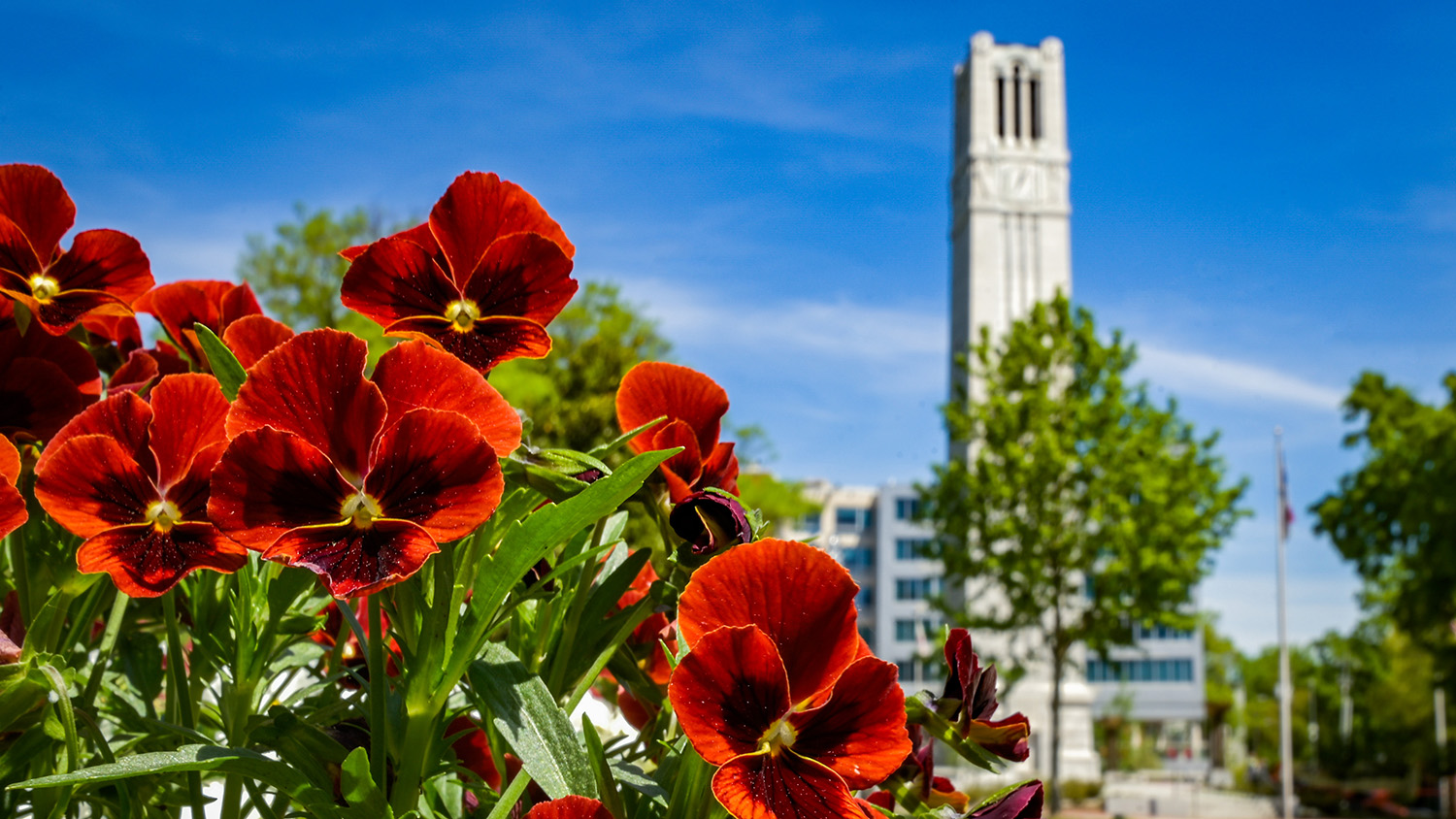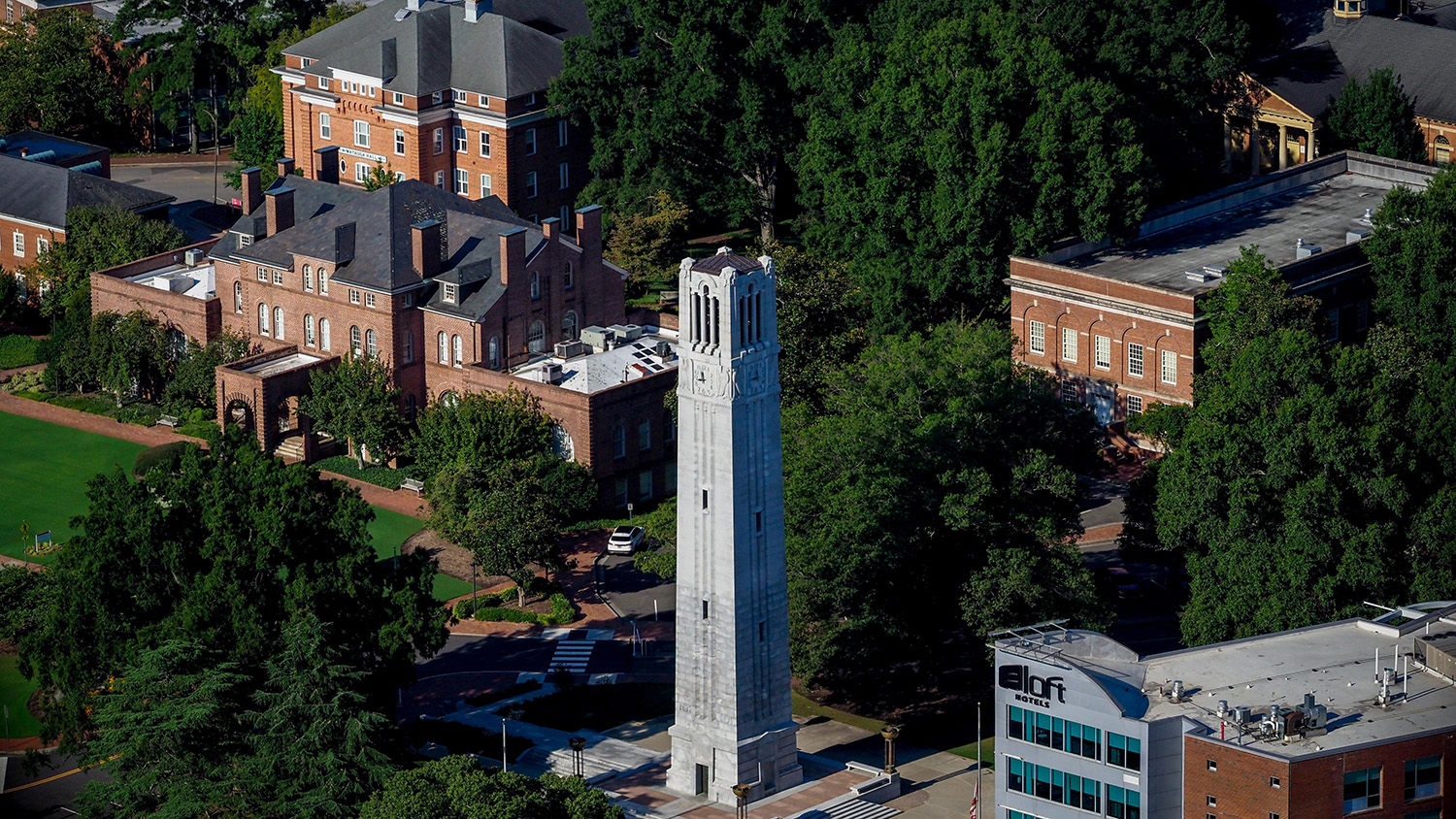Women Making It Work
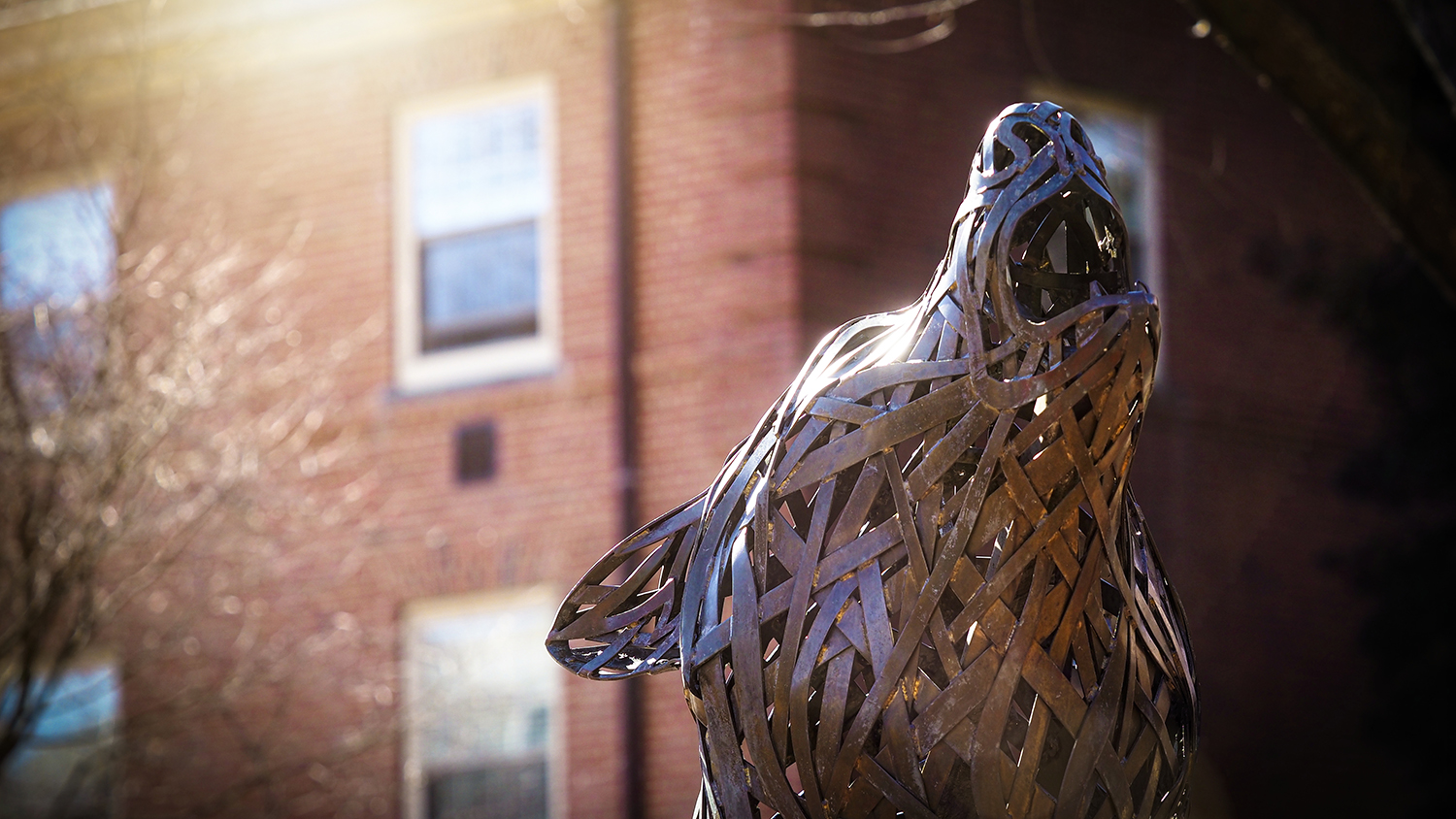
Women’s History Month feels a little different in 2021. This March, we mark the one-year anniversary of the COVID-19 pandemic, which seems to have disproportionately impacted women in the workplace.
Thousands of women at NC State have experienced the impact of the pandemic on a variety of levels. To honor women at the university living during this historic time, we asked some Wolfpack women to share their experiences of navigating the past year.
Jennifer Gilmore
Director, Marketing and Communication, Campus Enterprises
How did the COVID-19 pandemic impact your work life initially, and how did it continue to do so over the past year?
 At first, all I wanted to do was stare at the television to understand what was going on. But as a leader in our department, I had to shift into “What should we be doing to support our employees?” These were different challenges we had never addressed, but we collaborated with Emergency Management and Mission Continuity and addressed ways to keep our staff and students safe based on the information we had in addition to adjusting our focus as a whole. As an administrator, I mostly worked at home and had to learn how to lead and mentor my team via zoom which was a new concept. Now Zoom is an everyday part of my job and honestly it’s a good tool for pulling more people into the conversation and collaborating in ways that were impossible before. We have also used this time to reinvent how we do a lot of things so I’m eager to put those plans into place this next year.
At first, all I wanted to do was stare at the television to understand what was going on. But as a leader in our department, I had to shift into “What should we be doing to support our employees?” These were different challenges we had never addressed, but we collaborated with Emergency Management and Mission Continuity and addressed ways to keep our staff and students safe based on the information we had in addition to adjusting our focus as a whole. As an administrator, I mostly worked at home and had to learn how to lead and mentor my team via zoom which was a new concept. Now Zoom is an everyday part of my job and honestly it’s a good tool for pulling more people into the conversation and collaborating in ways that were impossible before. We have also used this time to reinvent how we do a lot of things so I’m eager to put those plans into place this next year.
How did the pandemic impact the division between work and home life, and what was that like for you?
Well, I just married two years ago, and between the two of us, we have four children and an elderly parent living with us. Everyone came home so we had seven people in the house. It was a little crazy there for a while! But I have learned to be more productive at home and rather like having a choice between coming in or working from home, but overall nothing can replace being on-site so I look forward to everyone being back.
What were some of the biggest challenges you’ve faced over the past year?
Coming up with a new way to deliver our orientation messages and keep people safe when they come through our operations, keeping up my staff morale and productivity as well as supporting them through the furloughs has been challenging. In fact, having so many people on furlough has been a challenge — it makes it harder to react and respond quickly.
Were there opportunities as well?
Yes. We have had some time to rethink so much of what we do and reset. Zoom has broadened our ability to collaborate and bring more voices into our ideation and planning.
What have you learned about the following: work/the way you work, life lessons/the way you approach life, and the people around you?
While Zoom can be exhausting, I think it will be an important tool going forward. I work with some really smart people here at NC State and have gotten to know a lot more people due to COVID/Zoom/widespread collaboration. I have never seen this much collaboration in the 12 years I have worked at NC State. While it has been extremely difficult, I am looking forward to the fruits that are borne from adversity and challenges.
Cassandra Kwon
Research Assistant Professor, Wilson College of Textiles, Textile Protection and Comfort Center
How did the COVID-19 pandemic impact your work life initially, and how did it continue to do so over the past year?
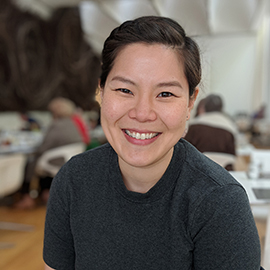 The pandemic initially impacted my work life on a communication level — the learning curve in adapting to preferred digital platforms for meetings was a time-taker, as well as setting expectations for students on how to help them manage their time for research and classes. It was clear from the beginning that increased interaction was going to be the best approach, in order to make sure everyone was engaged and that was going to be through constant communication.
The pandemic initially impacted my work life on a communication level — the learning curve in adapting to preferred digital platforms for meetings was a time-taker, as well as setting expectations for students on how to help them manage their time for research and classes. It was clear from the beginning that increased interaction was going to be the best approach, in order to make sure everyone was engaged and that was going to be through constant communication.
How did the pandemic impact the division between work and home life, and what was that like for you?
The division between work and home life was definitely blurred in the beginning — having to go to work meant just heading down the stairs! And the amount of new “office mates” I had acquired through the pandemic took some getting used to. Again, communication was key at home — making sure that meeting schedules were known (for quiet time) and where these meetings could take place. It was also important to recognize that my work space was just that, for work, and to be able to separate myself from that space at the end of the day so I could enjoy spending time with my family in the evenings.
What were some of the biggest challenges you’ve faced over the past year?
Work-related, the biggest challenge was being able to shift the approach within my research. Luckily, I had research that was just starting, so I didn’t have to worry about that research being impacted by not being able to be around other people. However, as the year progressed and the research was getting further along, it became apparent that alternatives would have to be created in order to fulfil our research objectives. Everything moved online, and the planning process around the move was an additional layer of work because you have to coordinate around others’ increasingly busy schedules, technology limitations, and increased reliability for their cooperation.
Personally, one of the biggest challenges this past year was coping with being isolated from my family — you worry about those you are no longer able to see on a regular basis. Additionally, I was expecting a child during this time and research with COVID-19 was still in the early stages, so there were a lot of unknowns on how it may or may not impact those who were pregnant. So navigating how to safely go to the doctor’s office, activities that were safe, and when I could be around others was a huge challenge and added to the already stressful times.
Were there opportunities as well?
Absolutely. The pandemic affected everyone — and I think a lot of people had the same perspective and question of “what can I do to help?” There was an increase in cross-collaborations that I do not think would have normally happened if we were all not in the same situation. I was able to meet with new colleagues to discuss projects that necessitated different backgrounds and gave me the opportunity to learn more about their respective work.
What have you learned about the following: work/the way you work, life lessons/the way you approach life, and the people around you?
I’ve learned we have much more in common than not — everyone has a life outside of their workplace and as colleagues we only really see the work part. But now, I have been invited into so many homes via Zoom calls. It’s amazing to see how everyone juggles being at home and balancing their work life — just like me.
Jacqueline Perry
Communications Technologist, Office for Institutional Equity and Diversity
How did the COVID-19 pandemic impact your work life initially, and how did it continue to do so over the past year?
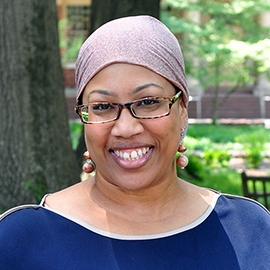 I think that pretty early on, I realized that if we had to work from home for an extended amount of time, I would probably be fine — I actually enjoyed working from home on my weekly telecommute days, and tended to get a lot done without the face to face distractions that sometimes come from being in an office environment. The nature of my work is not such that I am in a lot of meetings or need to do a lot of work that cannot be done online, so I felt pretty confident that I could pick up with my laptop and a few things from the office and continue as normal, just remotely. So far, a year later, it has gone very well, and our team has found new ways of checking in and staying accountable.
I think that pretty early on, I realized that if we had to work from home for an extended amount of time, I would probably be fine — I actually enjoyed working from home on my weekly telecommute days, and tended to get a lot done without the face to face distractions that sometimes come from being in an office environment. The nature of my work is not such that I am in a lot of meetings or need to do a lot of work that cannot be done online, so I felt pretty confident that I could pick up with my laptop and a few things from the office and continue as normal, just remotely. So far, a year later, it has gone very well, and our team has found new ways of checking in and staying accountable.
How did the pandemic impact the division between work and home life, and what was that like for you?
I think what continues to be a source of self-checking is when to stop working. In the absence of the construct of leaving one place (the office) to go to another scheduled event (picking up my son from practice after school, meeting my group for a scheduled bike ride after work, meeting friends for dinner) — nothing is actually marking the passage of time and there are NO social cues that it’s time to shut it down for the day. On a typical work day, even on a day I had a little extra work to finish up, I could always count on the lights flicking off in my building and that last coworker walking by to say “Hey! Why are you still here – it is almost 5:30 and WE should go!” In speaking with coworkers this year, I realized that each of us rely on each other to make sure we’re going out for lunch, going to sit outside when the weather is nice, taking a walk when it appears you haven’t left your office all day — and even leaving work on time. The hidden skill of working from home seems to be learning how to be at work versus at home — especially when you’ve been at home for days and weeks on end.
This has been a year of late Google chats to coworkers that often have the tone of “Wow, I didn’t realize 5 p.m. had come already!” and “I forgot that I started working at 7 this morning, and I’m STILL here…” I think we’re all feeling the lack of boundaries that working from home for an extended time adds, but we still try to make sure we are getting up, going for a walk, or even stepping outside to feel the sunshine on nice days.
What were some of the biggest challenges you’ve faced over the past year?
One of the largest challenges over the past year has been working in a “coworking” space with my husband who has also been home full time. While I felt that I was fine working from home, and was used to doing so because of my telecommute time — it did NOT factor in working from home with someone else with a very different work style! Whereas my job is fairly quiet, I can work solo all day without speaking to people in a meeting or in person, he is in meetings and conference calls all day long. Initially, it made for a very loud work environment for me, and this summer, we actually had renovations to our home office to include a new, fully closing door with sound-proofing (which had never been an issue before with our older pocket doors that didn’t close completely). I no longer have to listen to meetings echoing through the house which I’m not involved in!
In the beginning of all of this, last spring my son’s school went to virtual learning within a few days of everything shutting down. We made a quick pivot to online learning, since his school had not shut down because of the pandemic. It was a rocky start, but he was actually able to finish up his school year online from March – May. With my husband in back-to-back meetings all day, school management and learning to use the platforms kind of fell to me. It was a rough finish to the school year, but I’m glad he didn’t miss out on all of that classroom time. In August, his school made the decision to open in-person full time. While we both worked from home, we made the decision that he would go to school and we would give it a try, so long as it was safe. So far, it’s not been easy, but the students have all taken everything in stride and aside from a week or so where they decided to quarantine most of his grade, he will be finishing up his ninth grade year having been in school the whole time. For us, it’s been very hard to let him go while we’re both working from home — but his school has done a very good job, and all of the students are very compliant with masks and social distancing. It has been daily monitoring, an online app and questionnaire each morning, and constant communications to and from the school from every family about their health and covid status.
Were there opportunities as well?
Yes, I think there have been many opportunities to learn and share with our department how we can stay connected while apart. I have had the opportunity to watch our Student Centers (The GLBT Center, Women’s Center, Multicultural Student Affairs, and the African American Student Center) work incredibly hard at fostering virtual communities while their students are essentially all across the state. Staying connected is not just essential to the way we work, it’s essential to how we live, how our students learn, our mental health, and for campus, how we will reconnect once we’re able to come together again. I think this pandemic has really driven home what it means to “stay connected” and has shown us all why it’s SO important to keep our community in reach and check on each other.
What have you learned about the following: work/the way you work, life lessons/the way you approach life, and the people around you?
I think that for me, I learned that I have to have balance. I can be at home all day for work, but at a certain point, I have to switch gears and do something that makes it clear that I’m stepping away from work (even if work is always close by!). I have also learned that overworking to prove that you’re “doing enough” is a concept many of us have had to unlearn in the past year. In this environment, overworking means taking away time from something that is probably beneficial to your mental wellbeing. I have learned that the concept of “doing enough” also includes doing healthy things to ensure that when you are working, you are efficient and productive. Not giving myself breaks and time to be away without worry that things are not being done only makes working time more stressful than it should be. I was putting requirements on myself that no one else had for me, and in doing so, I was working too long and frustrated that I was working so much and not getting away to relax…until I realized I was in control of this and could fix it by being OK stepping away and leaving some work until tomorrow and making realistic time frames for requests.
Family wise, I let go of my constant need to manage my teen’s “online time” — as I realized that not once has he complained that he hadn’t seen his friends, wished he could go out somewhere with them, or any of the other typical complaints we expected from a teen on lockdown. He told us that he “saw” his friends every day online, and no, he was NOT lonely for in-person interaction. At any given time this past year while he was out of school, we could hear laughing, yelling, game strategy and general fun coming from his room. He was with his people — and being virtual didn’t matter one bit to him, it’s the fact that he was doing all of this online with his usual school friends. They haven’t been lonely — they’ve been very connected, and as an only child, we REALLY worried about him being at home last year and away from his friends. We still worry about one of them being “46 year old Carl” in his mom’s basement pretending to be a teen, but not nearly as much as before.
Mary Cole Pike
Issues Management Lead, University Communications
How did the COVID-19 pandemic impact your work life initially, and how did it continue to do so over the past year?
 Starting in March 2020, the COVID-19 pandemic and NC State’s response and communications around it became my primary work objective. While things ebbed and flowed over the course of the year with other projects and communications issues, our response to the pandemic was and is still my primary focus day-to-day. It’s interesting to look back on my work goals for 2020 and how they so drastically shifted once the pandemic hit.
Starting in March 2020, the COVID-19 pandemic and NC State’s response and communications around it became my primary work objective. While things ebbed and flowed over the course of the year with other projects and communications issues, our response to the pandemic was and is still my primary focus day-to-day. It’s interesting to look back on my work goals for 2020 and how they so drastically shifted once the pandemic hit.
How did the pandemic impact the division between work and home life, and what was that like for you?
From the start, we had a full and oftentimes crazy house. My husband and I both did our best to work from home with two preschool-aged children for several months — juggling calls and meetings and trying to find time to help with Play Doh or getting the kids outside and moving. The combination of no longer having a commute, having my kids running into the middle of meetings, and an increased workload made it extremely difficult to separate work life from home life. Luckily, my kids provided some needed comic relief during marathon Zoom meetings, but the wall between work and home was totally demolished. Sometimes this meant working early in the mornings or late at night just to get things done, and sometimes it meant taking a walk around the neighborhood or doing chalk art in the driveway. It was — and still is — a challenge to separate work life and home life, but I try my best.
What were some of the biggest challenges you’ve faced over the past year?
Thankfully, our family has stayed well through it all, but the isolation from my extended family, friends and coworkers was particularly challenging, especially with my kids being too young to really understand a virus. I remember explaining to my daughter why we couldn’t go to Pullen Park anymore (she loves the train). It broke my heart that we wouldn’t get to spend time playing in the park and eating ice cream on summer evenings, or going to actual, in-person birthday parties with 20 squealing kids. The pandemic truly made me grateful for the busy life that sometimes felt so stressful. And, while my kids weren’t in virtual school because of their ages, I was constantly worried about not doing enough to keep them engaged and happy during the days when they were still at home with us. And when I was doing things with them, I was worried about falling behind with work. It was challenging to balance it all.
Were there opportunities as well?
Once the weather warmed up last spring, we made it a point to do a picnic lunch outside almost every day. As a working mom, getting this extra time with my kids and my husband was precious. It wasn’t always perfect, but it was time I wouldn’t have had otherwise. I didn’t get in on the bread-making craze, but I did spend more time meal-planning and cooked some things on weeknights that might have been a stretch had I been in the office all day. We did more projects around the house, got to know our neighbors better, adopted a dog, and took our kids camping in a few of our state’s parks. With work, I had tremendous opportunity to grow as the university managed an ongoing and evolving situation. I got to work with our team to help guide university messages and strategy, as well as build new relationships with so many smart people from across the university.
What have you learned about the following: work/the way you work, life lessons/the way you approach life, and the people around you?
The past year has shown me that I was probably a little too busy before the pandemic hit. Most nights, after a full day of working, we typically had some other activity to do either individually or as a family. The weekends were usually packed with social outings or lots of errands. While I’m still busy with my work and kids now, I’ve experienced the true value of quality time, as well as the value of having absolutely nothing to do. I knew before the pandemic that I struggled to really “unplug” from work, and that’s even more clear now that my work is in my house. To help with that, I’ve started scheduling blocks of time throughout the day to either get in a workout, sit outside for a few minutes, and just generally get away from the screen. I hope to keep that practice up as best I can going forward.
Yolanda Santiago
Executive Pastry Chef, Dining and Catering Operations
How did the COVID-19 pandemic impact your work life initially, and how did it continue to do so over the past year?
 COVID impacted everything about my work, and personal life. I was waking up every day with a constant fear and worry that my family or staff could become very ill. It was scary.
COVID impacted everything about my work, and personal life. I was waking up every day with a constant fear and worry that my family or staff could become very ill. It was scary.
How did the pandemic impact the division between work and home life, and what was that like for you?
It was very difficult. I feel like this wasn’t a division for me. My husband was in health care so I was worried equally about my work and home life. I have all the responsibilities that come with my job and in addition there was a constant fear of your family getting sick or your work family getting sick. People were losing their lives. I couldn’t look at co-workers and employees as just people I worked with; I saw them as mothers, sisters, daughters, fathers, etc. I worried for them just as much as I worried for my family.
What were some of the biggest challenges you’ve faced over the past year?
I faced two main challenges. One was the uncertainty of the pandemic, and what it brings. No one had any idea how it would affect our health, our job, and our everyday life. The other was trying to understand and stay up-to-date on all the news that sometimes could seem conflicting or was changing by the minute. Also, I was making sure my staff understood the CDC recommendations, and that we were following all the rules the university was implementing to keep staff and students safe.
Were there opportunities as well?
Yes, there were. As a team we have had to adapt to the consistent changes that had to happen during the pandemic. As a result, it has made us stronger as a team, more resourceful, and we have been able to keep busy in our area. Even after a difficult year, we have been able to bring smiles to students by providing them with sweet treats like cupcakes and desserts. We love that about our job.
What have you learned about the following: work/the way you work, life lessons/the way you approach life, and the people around you?
I learned that my family and friends are the best medicine I have. It was difficult to not be able to hug them, but having family Zoom calls brought so much joy. I appreciate my staff even more than before. I have a great team, and our teamwork was extended outside of the kitchen. We would check on each other, and when it was difficult to find certain items or supplies at the grocery store, we would call and pick up items like flour or tissue for each other when we were out picking up supplies for our families. The last year has reminded me to be more present and appreciate the everyday little things, because you never know when you won’t be able to hug someone you love or sit and have lunch together as a team.
- Categories:
